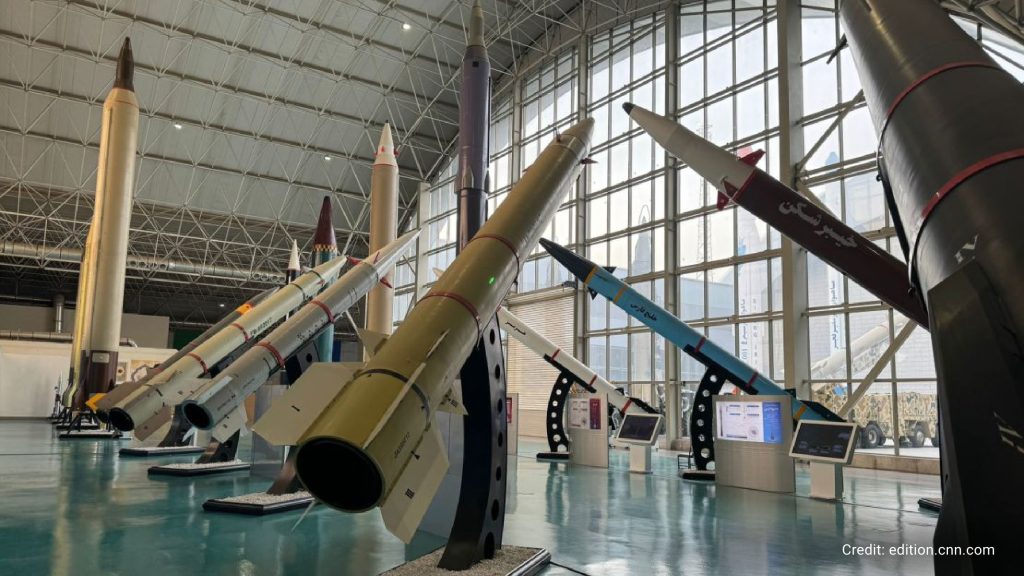
Iran launched a major attack on Israel two weeks after Israel had targeted the Iranian consulate in Syria using Iranian drones.
Despite the ongoing sanctions imposed by the US on Iran, the economy has remained stagnant. The question arises: How was Iran able to launch the attack on Israel, and what kind of technology was utilized with the drones?
Iranian Drones
Shahed-136 Drones
In recent conflicts, Iran deployed Shahed-136 drones, which achieve speeds of about 115 miles per hour. In comparison, Iran’s fleet of MiG-29 fighter jets, acquired in the early 1990s, boast top speeds of approximately 1,500 miles per hour.
Cost comparisons reveal that one Shahed-136 is priced around $20,000, a fraction of the $1 million cost of a Russian Kalibre cruise missile.
Arash Drones
The Arash drones, roughly 10 feet in length, could be launched from standard vehicles, enhancing their deploy ability. Their components are simpler to illicitly transport, and the drones themselves present a lower detection risk by radar or visually compared to ballistic missiles, emitting minimal noise and thermal signatures, complicating satellite tracking.
Combat and Reconnaissance Drones
Iran maintains an expansive fleet of over a dozen combat drone models capable of engaging targets on land, sea, or air, then returning to base. The larger drones, such as the Shahed-149, have a reach of 2,000 kilometers (1,240 miles) and can transport up to 500 kilograms (1,100 pounds) of ordnance or electronic gear.
The majority of Iran’s combat drones, including those capable of long-distance operations, are equipped with surveillance features. These drones are tasked with activities ranging from capturing imagery and videos to designating targets for bombers and other drones that could have a chance to might have been used on the Iranian consulate.
Israeli Drones
IAI Eitan
Known as the largest and most sophisticated model in the Israeli-Palestinian conflict, the IAI Eitan boasts a top speed of 370 km/h and a length of 14 meters, capable of sustained flight for up to 36 hours. Serving multiple purposes as a Medium Altitude Long Endurance (MALE) and Unmanned Aerial System (UAS), it excels in strategic missions. It features Automatic Taxi Takeoff and Landing (ATOL), proving indispensable for tasks like information gathering, surveillance, and target identification.
Suicidal Drone: Spike Firefly
First deployed in Khan Yunis during the Israeli-Palestinian conflict, the Spike Firefly was crafted specifically for infantry use. Despite its compact size, weighing only 3 kg with a 350 g warhead, it packs a powerful punch, making it an ideal choice for precise, covert operations.
Other Purposes: Skylark Drone
Part of a broader surveillance and espionage lineup, the Skylark drones represent the latest innovation from Elbit’s array of unmanned aerial vehicles (UAVs), which also includes models like Skystriker, Magni, Thor, Hermes 900, and Hermes 450. During the conflict, Skylark 3 was extensively utilized. Notable for its 40 kg weight, it can remain airborne for up to five hours and reach altitudes of up to 12,000 feet.
New Drone: Spark
The newest drone, dubbed Spark, has been a topic of discussion, though specific details about its capabilities and functionalities remain undisclosed.
Which drone do you think was used on the Iranian consulate?
Inside Telecom provides you with an extensive list of content covering all aspects of the tech industry. Keep an eye on our Tech sections to stay informed and up-to-date with our daily articles.